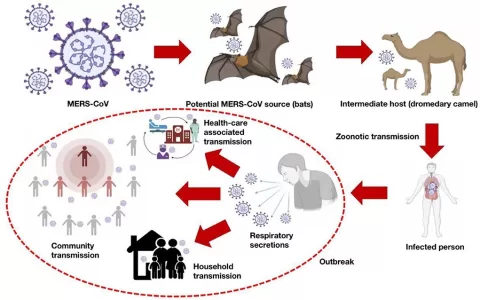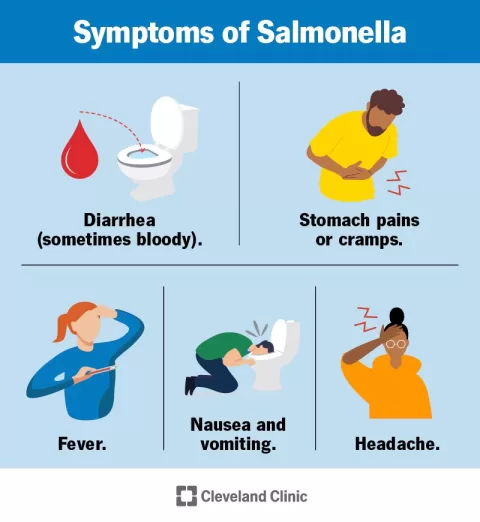Recombinant Myxoma Virus (ha-MYXV) has recently gained attention due to its alarming impact on European brown hares (Lepus europaeus), leading to a significant increase in mortality rates. This novel strain, which appears to be an adaptation of the myxoma virus, has been linked to a viral disease outbreak that causes distressing symptoms such as swollen eyelids, head edema, and dermatitis. Historically associated with myxomatosis in rabbits, this re-emergent virus has raised concerns among wildlife health experts as it begins to devastate populations of lagomorphs in affected regions. The onset of the disease was first noted in September 2020, but its devastating effects have only recently come to light, particularly in the border areas of Germany and the Netherlands. With ongoing monitoring and research, understanding the full ramifications of ha-MYXV is crucial to managing and mitigating its spread among lagomorphs.
The emergence of the recombinant myxoma virus represents a critical challenge for biodiversity, especially concerning lagomorph populations. This viral pathogen, which has shown the ability to cause severe health issues reminiscent of myxomatosis, poses a significant threat to European brown hare populations. The disease outbreak highlights a concerning trend as the virus, initially utilized for rabbit population control, adapts and impacts hares in unexpected ways. Recent analyses have traced the origin of the current strain to previous outbreaks in Iberian hares, underscoring a need for vigilance among wildlife health researchers. As we delve into the dynamics of this viral infection, it becomes essential to promote strategies for effective wildlife management and disease prevention.
Understanding Myxomatosis in Lagomorphs
Myxomatosis is a viral disease primarily affecting lagomorphs, particularly rabbits and hares. Caused by the Myxoma virus (MYXV), myxomatosis can lead to severe symptoms in infected animals, including swollen eyelids, head edema, and skin lesions such as dermatitis. The transmission of the virus through insect vectors and direct contact with infected individuals poses a significant risk to hare populations in Europe. Given the sensitivity of European brown hares (Lepus europaeus) to this infection, outbreaks can result in substantial mortality and even threaten the viability of local populations.
Recent reports have highlighted a concerning rise in myxomatosis cases among European brown hares. Researchers are particularly focused on the recombinant myxoma virus (ha-MYXV), which appears to be a newly adapted strain that has emerged in these hare populations. This shift suggests that not only is the disease affecting the species differently, but it also emphasizes a need for more robust monitoring and intervention strategies. Monitoring health trends in lagomorph populations can help in mitigating the impact of such viral outbreaks and contribute to better wildlife management practices.
The Emergence of Recombinant Myxoma Virus (ha-MYXV)
The emergence of the recombinant myxoma virus (ha-MYXV) has raised alarm among wildlife health professionals and ecologists. First identified in regions bordering Germany and the Netherlands, ha-MYXV has led to notable increases in mortality rates among European brown hares. The clinical manifestations, characterized by symptoms analogous to classical myxomatosis, have been found prominently in populations previously unaffected by such viral diseases. Alarmingly, the outbreak data suggest that the virus has spread rapidly since its initial detection, possibly tracing its origins to earlier infections in Iberian hares.
This newly observed strain of myxoma virus illustrates the virus’s ability to adapt and evolve in response to host demographics and environmental factors, resulting in increased virulence in its hare hosts. Continuous study of ha-MYXV is essential, as understanding its genetic makeup and transmission dynamics could provide insights into controlling future outbreaks. The significance of this research extends beyond European brown hares, as it poses potential threats to other lagomorph species, including rabbits, thereby emphasizing the interconnectedness of wildlife health and the importance of comprehensive ecological studies.
Impact of Viral Disease Outbreaks on Wildlife Management
The recent rise of the ha-MYXV outbreak poses critical challenges for wildlife management strategies in Europe. The increase in mortality among European brown hares directly affects ecological balance, as these animals play a key role in local ecosystems. The substantial loss of hare populations can lead to cascading effects on predatory species and the overall biodiversity of the habitat they occupy. In response, wildlife management agencies must develop effective monitoring systems to quickly identify and manage viral disease outbreaks within hare and rabbit populations.
Additionally, the substantial impact of viral disease outbreaks on lagomorphs underscores the need for proactive measures. Strategies may include vaccination campaigns for at-risk populations, habitat management to reduce disease vector exposure, and public education on the significance of reporting sick or dead animals. Research on the factors contributing to the rapid spread of ha-MYXV will be invaluable in shaping future policies and interventions, ensuring that wildlife populations can be monitored effectively while minimizing the risks associated with emerging viral diseases.
The Role of Humans in Disease Transmission
Human activity has been identified as a contributing factor in the transmission and spread of the recombinant myxoma virus (ha-MYXV) among European brown hares. Land use, agricultural practices, and urban encroachment can alter habitats in ways that bring wildlife into closer contact with one another and with potential vectors, such as mosquitoes and fleas, facilitating the transfer of viruses. As humans continue to modify natural environments, understanding these dynamics becomes crucial in preventing future outbreaks of viral infections within wildlife.
Furthermore, it is vital to recognize that human-induced changes to ecosystems can also weaken the immunological defenses of wildlife populations. Increased stress from habitat fragmentation and competition for resources can make hare populations more vulnerable to infections such as myxomatosis. As a response, wildlife management strategies should incorporate human factors into their frameworks, promoting sustainable practices that consider the health of lagomorph populations and the prevention of the transmission of diseases like ha-MYXV.
Surveillance and Monitoring of European Brown Hares
Effective surveillance and monitoring systems are critical for the early detection of viral disease outbreaks, including those caused by the recombinant myxoma virus in European brown hares. Regular health assessments and population monitoring can provide essential data on the prevalence of myxomatosis and its clinical manifestations in hare populations. Research initiatives that involve the collection of biological samples, assessment of health metrics, and tracking of movement patterns are foundational in understanding the epidemiology of the disease.
The establishment of a robust monitoring program should integrate citizen science, where local communities can contribute to reporting cases of sick and dead hares. This grassroots approach empowers the public to play an active role in wildlife conservation while enhancing data collection efforts. Coupled with analytical tools and advanced genetic studies, ongoing surveillance can aid in predicting potential outbreaks, guiding intervention strategies, and ultimately safeguarding hare populations from the adverse effects of diseases like ha-MYXV.
Preventing the Spread of Myxomatosis in Lagomorphs
Preventive measures are critical in controlling the spread of myxomatosis among lagomorphs, particularly in light of the increasing threats posed by the recombinant myxoma virus (ha-MYXV). Implementing biosecurity protocols in habitats frequented by European brown hares can help minimize disease transmission routes. Strategies may include limiting access to at-risk areas during peak outbreak seasons and creating buffer zones to restrict interactions between populations of different lagomorph species.
Additionally, public awareness campaigns can inform communities about the risks associated with myxomatosis and promote responsible practices such as reporting sick animals or not releasing domesticated rabbits into the wild, which can introduce the virus to naive hare populations. Collaboration among wildlife management agencies, veterinary professionals, and environmental organizations is essential in crafting comprehensive health education initiatives that address both the biological and social factors contributing to the spread of myxomatosis in lagomorphs.
The Genetic Evolution of Myxoma Virus Strains
Understanding the genetic evolution of myxoma virus strains is vital for comprehending the dynamics of viral disease outbreaks in European brown hares. Genetic analysis of the ha-MYXV has revealed its close relation to strains previously affecting Iberian hares. This evolutionary insight highlights the potential adaptability of the virus, which could result in the emergence of new strains capable of causing further outbreaks. Such developments not only threaten hare populations but also illuminate the broader implications for wildlife disease management.
Studies investigating viral mutations and host interactions can reveal how myxoma virus strains develop traits that enhance their transmissibility and virulence. Surveillance of genetic changes in response to environmental pressures or host resistance mechanisms is crucial for predicting future patterns of disease spread. By identifying and characterizing these evolving strains, researchers can better inform wildlife management decisions and implement strategic approaches aimed at reducing the impact of myxomatosis outbreaks on lagomorph populations.
Implications for Biodiversity and Ecosystem Health
The implications of viral outbreaks like those caused by ha-MYXV extend far beyond individual species; they pose significant risks to overall biodiversity and ecosystem health. European brown hares play a crucial role as herbivores within their habitats, influencing plant community structures and serving as prey for numerous predators. The decline of hare populations due to myxomatosis can result in imbalances within these ecosystems, jeopardizing the intricate relationships between flora and fauna.
Additionally, the cascading effects of such outbreaks may lead to increased vulnerability for other species that rely on healthy hare populations for survival. It is essential for conservationists and wildlife managers to recognize that maintaining healthy hare populations is critical not only for preserving lagomorph diversity but also for sustaining ecological balance. Implementing integrated management strategies that prioritize the health of hare populations can enhance biodiversity conservation efforts and promote resilient ecosystems in the face of emerging diseases.
Future Research Directions in Myxomatosis Studies
Future research in the field of myxomatosis and its effect on populations of European brown hares is crucial for developing effective management and mitigation strategies. Investigating the epidemiological patterns and genetic underpinnings of recombinant myxoma virus (ha-MYXV) will provide insightful data that can aid in forecasting disease outbreaks. Enhanced understanding of how environmental factors, host ecology, and viral genetics interlink can lead to more targeted interventions and increase our preparedness for future viral challenges in wildlife.
Moreover, interdisciplinary research efforts that incorporate wildlife health, ecological dynamics, and genetic sequencing can unveil the complexity of myxomatosis outbreaks. Collaboration among virologists, ecologists, and conservationists will foster holistic approaches that not only address the current challenges posed by ha-MYXV but also contribute to broader wildlife health initiatives. As we advance our understanding of this critical issue, investing in comprehensive studies and long-term monitoring programs will be paramount to safeguarding the future of European brown hares and ensuring the vitality of their ecosystems.
Frequently Asked Questions
What is recombinant myxoma virus (ha-MYXV) and its significance in European brown hares?
Recombinant myxoma virus, specifically ha-MYXV, is a viral pathogen that has emerged in European brown hares (Lepus europaeus), leading to significant mortality rates. Symptoms include swollen eyelids and dermatitis, reminiscent of traditional myxomatosis, which has raised concerns within wildlife management regarding its impact on hare populations.
How does the myxomatosis virus affect European brown hares?
The myxomatosis virus, particularly the recombinant strain ha-MYXV, causes severe health issues in European brown hares, characterized by symptoms like head edema and facial dermatitis. The recent outbreaks have resulted in increased mortality, highlighting the virus’s detrimental effects on this lagomorph species.
When did the recombinant myxoma virus outbreak in European brown hares begin?
The outbreak of recombinant myxoma virus (ha-MYXV) in European brown hares reportedly began around September 2020, with a notable rise in cases observed by August 2024, particularly in regions close to the Germany-Netherlands border.
What are the clinical symptoms associated with ha-MYXV infections in lagomorphs?
Infections with recombinant myxoma virus (ha-MYXV) in lagomorphs, including European brown hares, manifest as swollen eyelids, head edema, and dermatitis. These clinical signs are crucial for identifying and monitoring the spread of the viral disease outbreak.
Is there a historical background to the myxomatosis virus affecting European brown hares?
Yes, the myxomatosis virus was originally introduced as a biocontrol agent for European rabbits in the 1950s. However, the appearance of disease outbreaks in European brown hares began with the emergence of a hare-adapted strain in Iberian hares around 2018, leading to the current situation with recombinant variants like ha-MYXV.
What measures are suggested for controlling the spread of ha-MYXV in hare populations?
To manage the spread of recombinant myxoma virus (ha-MYXV), it’s recommended to enhance monitoring efforts and implement wildlife management strategies aimed at understanding and controlling the impacts on European brown hares and potentially affected rabbit populations.
How are researchers studying the impact of ha-MYXV on hare populations?
Researchers are conducting pathological examinations and PCR analyses on affected European brown hares and other lagomorphs to study the infection rates of recombinant myxoma virus (ha-MYXV) and evaluate the clinical symptoms that accompany outbreaks.
What is the potential risk of ha-MYXV beyond European brown hares?
The emergence of recombinant myxoma virus (ha-MYXV) poses a risk not only to European brown hares but also potentially to rabbit populations, necessitating strategic responses to prevent wider ecological impacts due to this viral disease.
| Category | Details |
|---|---|
| Title | Recombinant Myxoma Virus in European Brown Hares, 2023–2024 |
| Authors | Luisa Fischer et al. |
| Abstract | Recombinant myxoma virus (ha-MYXV) has been linked to increased mortality in European brown hares, showing symptoms similar to myxomatosis. |
| Introduction | Reports of sick and dead hares with symptoms emerged from the border regions of Germany and the Netherlands, dating back to September 2020. |
| The Study | Examinations conducted on 193 wild lagomorphs from August to October 2024 revealed a significant presence of disease confirmed by PCR analyses. |
| Findings | The outbreak resulted in significant hare mortality, with rapid spread predicted across Europe, potentially aided by human activities. |
| Conclusions | The study highlights the need for monitoring and control measures to manage the viral disease’s impact on brown hares and potentially on rabbits. |
Summary
Recombinant Myxoma Virus has significantly impacted European brown hares, revealing a concerning increase in mortality linked to viral infections. The emergence of this virus in hares has key implications for wildlife management, necessitating timely monitoring and control strategies to prevent further outbreaks. As the virus spreads, its effects may extend beyond hares, potentially influencing other species such as rabbits. Understanding and addressing the ramifications of Recombinant Myxoma Virus is crucial for maintaining the health of lagomorph populations across Europe.
The content provided on this blog (e.g., symptom descriptions, health tips, or general advice) is for informational purposes only and is not a substitute for professional medical advice, diagnosis, or treatment. Always seek the guidance of your physician or other qualified healthcare provider with any questions you may have regarding a medical condition. Never disregard professional medical advice or delay seeking it because of something you have read on this website. If you believe you may have a medical emergency, call your doctor or emergency services immediately. Reliance on any information provided by this blog is solely at your own risk.








